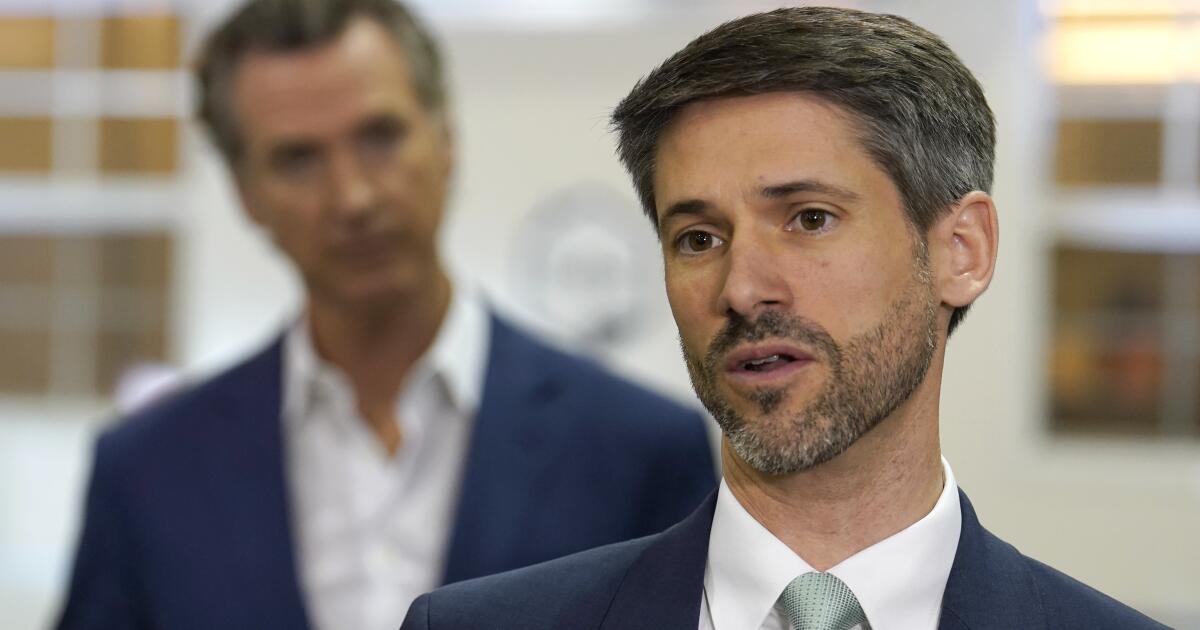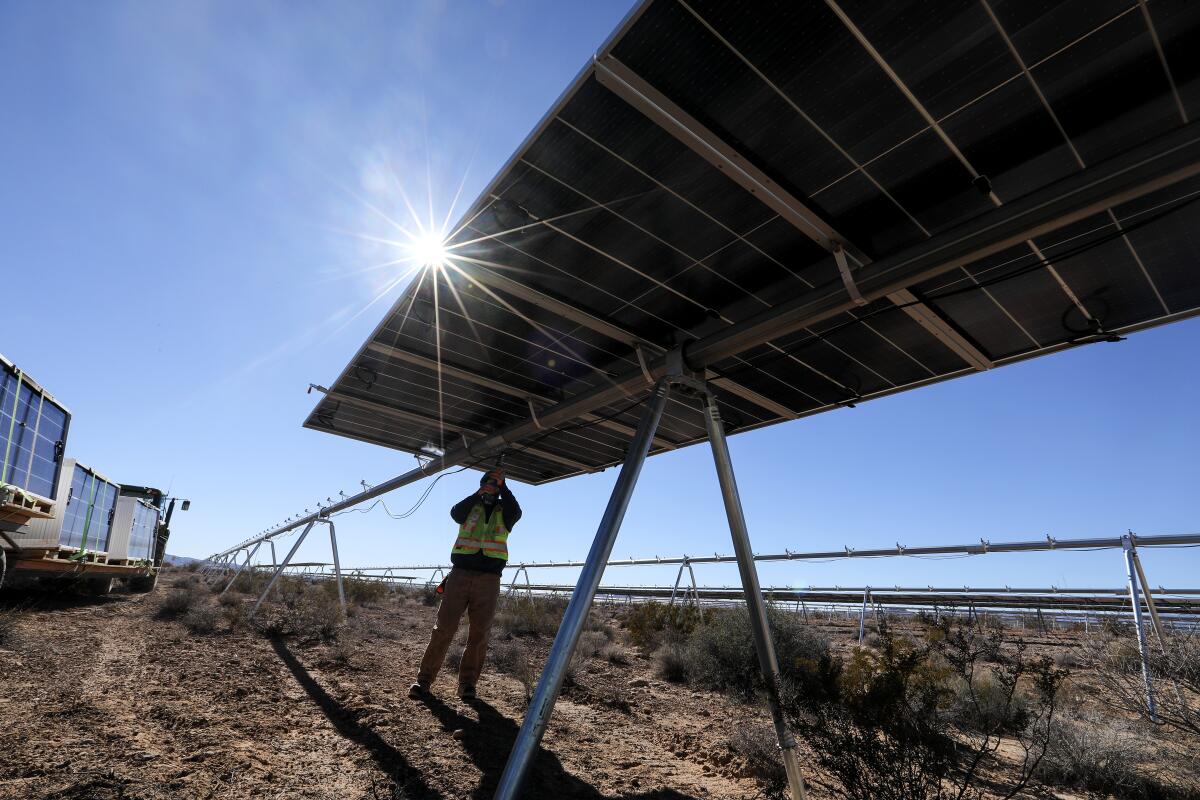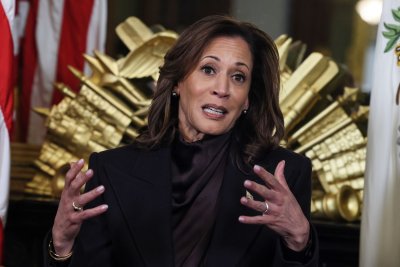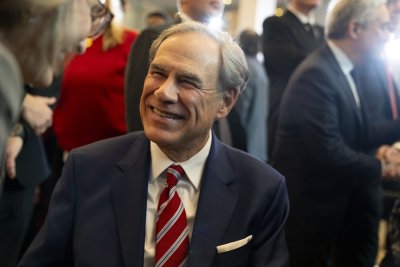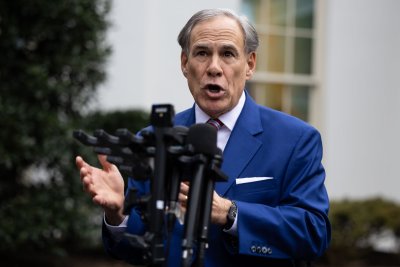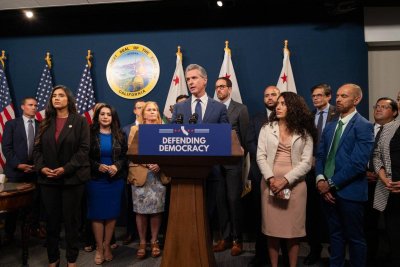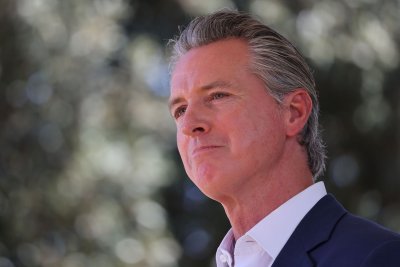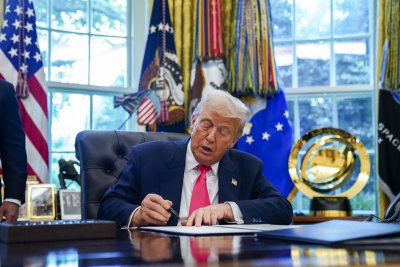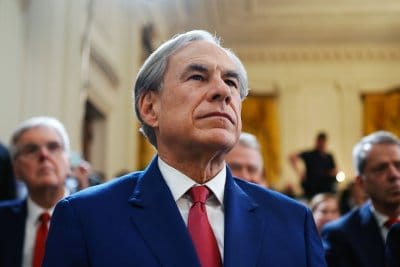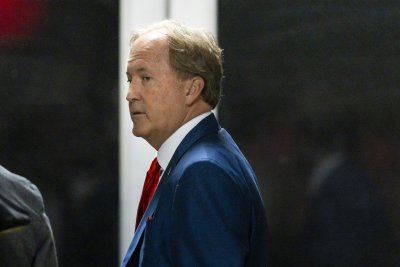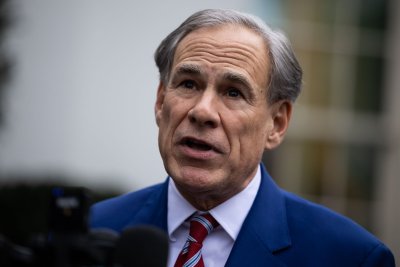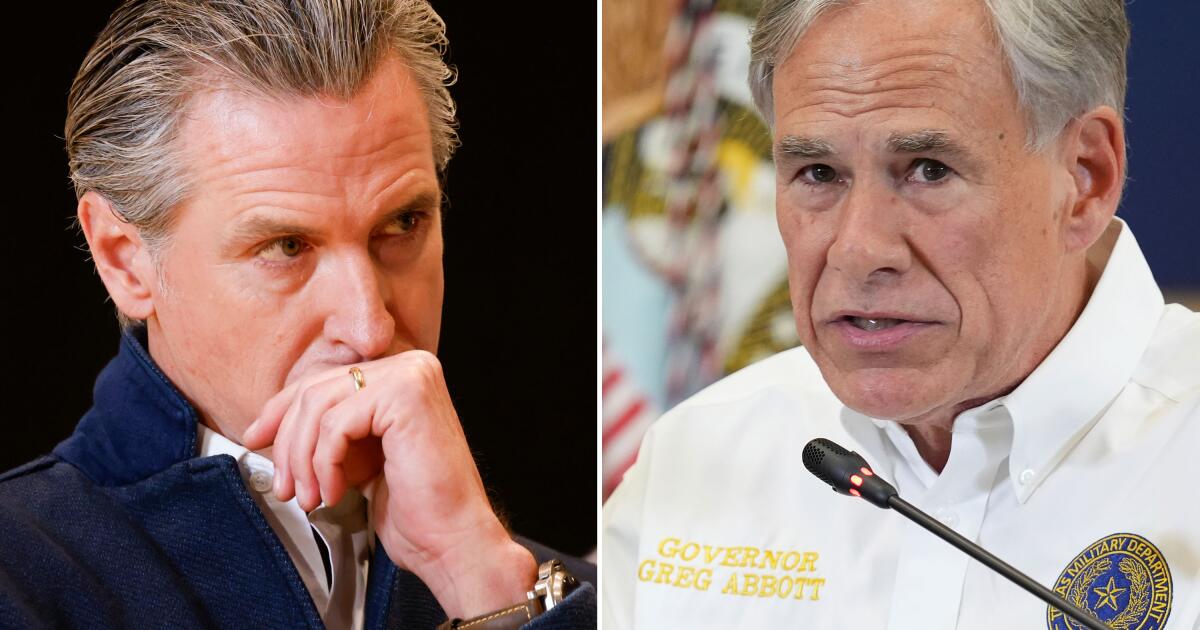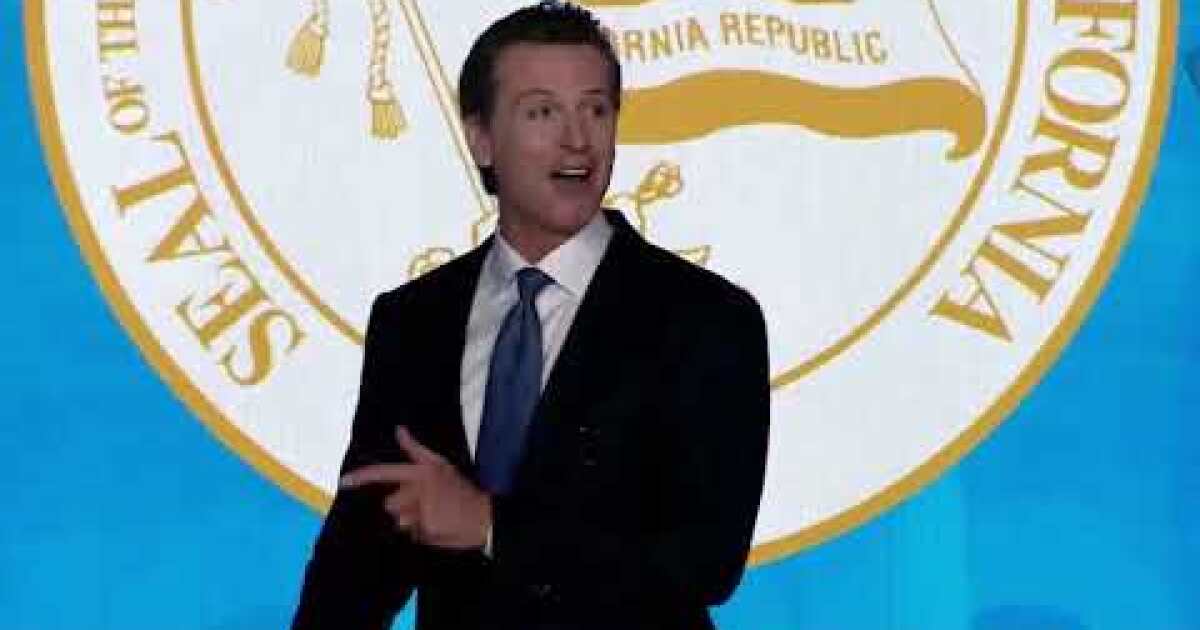San José Mayor Matt Mahan is a different kind of Democrat
SAN JOSE — Matt Mahan didn’t set out to be a scold and pain in Gavin Newsom’s backside.
He doesn’t mean to sound like a wrathful Republican when he criticizes one-party rule in Sacramento. Or a disgruntled independent when he assails a Democratic establishment that’s become, as he sees it, “a club of insiders who take care of each other” and mostly go along to get along.
Maybe because that’s “my diagnosis of it,” said the 42-year-old San José mayor, “I have tried very consciously to not fall into that trap of just wanting to be liked.”
He is, Mahan insists, a Democrat to his core, his roots sunk deep in the loamy soil of working-class Watsonville, where, over the mountains and light years from Silicon Valley, he grew up the son of a mail carrier and a high school teacher.
That makes his candor all the more bracing, and refreshing, at a time when Democrats are struggling nationally to regain their footing and find a meaningful way forward.
“We have become so caught up in our own rhetoric of helping the little guy that we’ve stopped actually checking to make sure that we are doing that,” Mahan said over lunch at a cantina downtown.
Results, he said, are what matter. Not good intentions.
And certainly not the performative pugilism that some, including the hyper-online Newsom, pass off as leadership. “A sugar high,” Mahan called it.
“I think a lot of Democrats are frustrated and feel powerless, and so that rhetoric has this cathartic effect,” he said. “But I don’t know that it actually, over time, moves us toward success, and I mean not just success in society, but even political success, because ultimately, if you’re not offering solutions, I think you can have a hard time getting to a majority position.”
Mahan comes by his outsider status naturally.
In high school, he rode the bus four hours a day — from Watsonville to San José and back again — to attend a college prep academy on a work-study scholarship. (“My golden ticket,” he called it.) He worked on the grounds crew to help pay his way, and continued on to Harvard, where his dorm mates included Mark Zuckerberg. (The two hung out in college and still talk occasionally.)
After a year in Bolivia, helping family farmers, and a stint teaching middle school, Mahan co-founded a social media company that focused on civic engagement and raising money for nonprofits. He was elected to the San José City Council in 2020. Even before his first term was completed, Mahan launched an upstart bid for mayor.
The front-runner was a member of the Santa Clara County Board of Supervisors, a former San José vice mayor and longtime civic leader. Waging a nothing-to-lose campaign — “we had no endorsements, we had much less money” — Mahan knocked on thousands of doors. He asked voters what they had on their minds.
It turned out to be rudimentary stuff. Potholes. Public safety. A sense they were paying a whole lot of taxes and getting very little in return.
The experience impressed two things upon Mahan: a need for accountability and the importance of voters’ lived experience, as opposed to vague promises, abstract notions and politically fashionable statements.
“I think ultimately political success and policy success comes from offering better ideas and demonstrating impact,” Mahan said, sounding very much like the technocrat he calls himself.
Mahan won the mayor’s race — narrowly, in a major upset — and was reelected two years later in a November 2024 landslide. (The year Mahan was elected, San José voted to shift its mayoral contest to correspond with presidential balloting, which cut his first term in half.)
Soon enough, Mahan found himself at odds with some major Democratic constituencies, including powerful labor unions, which pushed back over wages and a return-to-office policy, and homeless advocates who bristled at Mahan’s focus on short-term housing and threat to arrest homeless people who refused multiple offers of shelter.
“Homelessness can’t be a choice,” Mahan said at a spring news conference announcing the move.
His heresies don’t end there.
Mahan broke with many Democrats by vigorously supporting Proposition 36, the 2024 anti-crime measure that stiffened penalties for repeated theft and crimes involving fentanyl. Despite opposition from Newsom and most of the state’s Democratic leadership, it passed with nearly 70% support; Mahan has since criticized Newsom and the Democratic-run Legislature for stinting on funds needed for implementation.
But his most conspicuous breach involves the governor’s Trumpy transformation into a social media troll.
While the mockery and memes may feel good as snickering payback and certainly stoke the Democratic base — boosting Newsom’s presidential hopes — Mahan suggested they are ultimately counterproductive.
“If we don’t have a politics of solutions and making people’s lives better, I just don’t know where we end up,” he said, as his enchiladas sat cooling before him. “It’s politics practiced in bad faith, where we just … tell people things that test well because they sound nice, and then we just blame the other side for being evil, incompetent, corrupt. … It’s just a race to the bottom.”
He took particular issue with Newsom’s taunting reaction after Bed Bath & Beyond recently announced it won’t open or operate new stores in California.
It wasn’t “a reasoned argument,” Mahan wrote in a scathing opinion piece in the San Francisco Standard. The tart headline: “How about less time breaking the internet and more time fixing California?”
“‘Breaking the internet’ doesn’t solve real-world problems — quite the opposite,” Mahan wrote. “More often than not, it’s just political theater that serves to excuse inaction and ineffective policies.”
He elaborated over lunch.
“You have an employer who’s pointing out real issues that everybody else who’s watching thinks are real issues. Talking about business climate, cost of doing business, public safety issues, retail theft, untreated addiction and mental illness,” Mahan said.
“When we start turning on constituents because we don’t agree with their ideology, or attacking Trump is more important than actually solving problems or listening to the criticism … I think we’re heading down a dangerous road.”
Inevitably, there’s the question: To what end all this poking of thumbs in his fellow Democrats’ eyes?
Mahan has drawn wide notice, in particular from the more pragmatic wing of the party. His back-to-basics approach has yielded some measurable success. A recent study called San José the safest major city in the country and, while the overall homeless population grew slightly, there’s been progress moving people off the streets into city shelters.
He considered plunging into the race for governor, but the timing wasn’t right. Mahan has two small children and a wife who’s flourishing in her career as an educator. Besides, Mahan said, he’s quite content being mayor of California’s third-most populous city.
“I have a wonderful marriage,” Mahan said. “I have two wonderful kids. I loved working in the private sector. I’ve got a lot of great friends. I’m doing this because I genuinely want to make our city better, and I love the job. But it’s not who I am, and I can separate myself from the job.”
That grounding and perspective, so different from those politicians oozing ambition from every pore, may be Mahan’s best commendation for higher office.
If and when.
